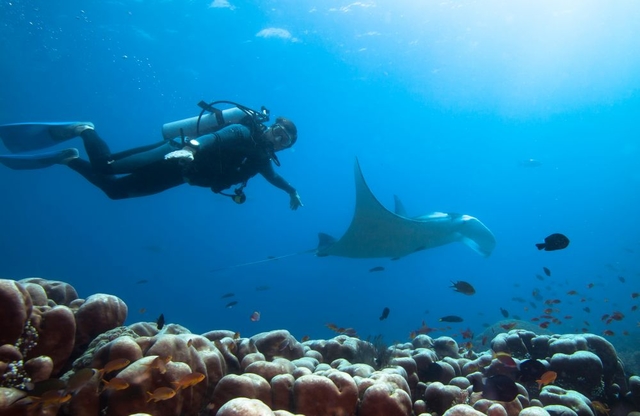
The underwater life in Bali is beautiful and will amaze you in any season and weather. Diving is a pass to a new world that will not only provide you with a fantastic view and emotions but might even reveal new facets of your personality.
To learn more about this available island activity and the specifics of diving in Bali, we reached out to a professional and passionate diver with 13 years of experience, Den. He shared insights on where, how, and with whom it's best to explore the island's underwater world, along with a plan for two weeks of powerful diving.
Den, tell us how your diving story began?
I first dived in 2007 in Egypt, encouraged by my father. We were riding quads along the coast that day, and he unexpectedly suggested trying diving. After the dive, I suddenly realized that I had just fulfilled my long-forgotten childhood dream. Throughout my childhood, I spent every weekend diving with fins and a mask in the pool. My parents enrolled me in swimming lessons, which I didn't enjoy, and the subscription remained. However, I found pleasure in freediving and spent around ten years diving in the pool. At that time, the Jacques Cousteau team's TV series was popular, and I had a dream of becoming a diver. Years later, when we dived in Egypt, I realized that dreams do come true, and this accidental event changed my life.
It's often heard that diving is something very serious, for fearless tough guys, something dangerous and risky. What would you say to that?
Of course, that's not true. According to PADI standards, everything is done very light so that even an American farmer, John, without any problems, could finish the open water course. By the way, when I taught people, I made it a rule for myself not to take more than one student for the first dive intro dive, then all attention could be focused on them, and the first dive becomes much more interesting and easier. Many times more exciting than when an instructor is too busy with two newcomers experiencing underwater for the first time.
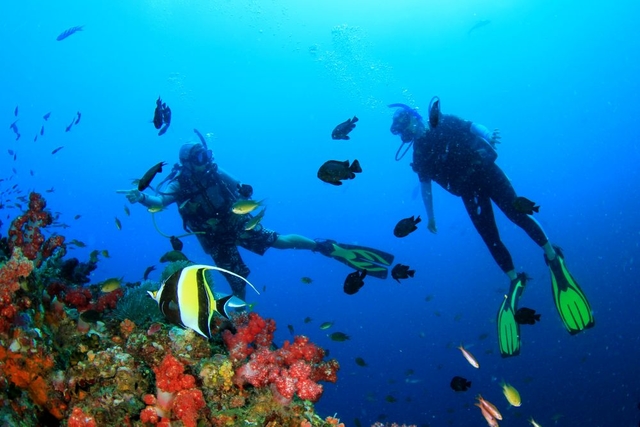
You started diving in the Red Sea, which is considered one of the most beautiful diving spots on the planet. Now you dive in Bali. Can these places be compared?
I always answer this question like this—I enjoy walking in a pine forest, a birch forest, and even strolling in a city park is interesting. Riding a bike in a field is also quite enjoyable. So, I don't take on the task of comparing these events. Diving often depends on who you dive with, your mood, your luck with marine creatures, and the dive spot. Therefore, it's hard for me to say that something is worse or better. Especially since diving has long ceased to reflect only external impressions for me; now, it's more like a form of meditation. Each dive spot can provide new sensations and a new experience, even if you already have three thousand dives, and you have dived at this particular spot many times.
In your opinion, which dive spots in Bali are a must-visit?
I'm currently working on a comprehensive article about dive spots in Bali. I want to sort all the places not only by difficulty but in a specific sequence so that each subsequent spot provides more vivid impressions and, at the same time, prepares the diver for a higher level, improving their skills.
At the moment, my list looks like this:
These first three spots have minimal or no currents, allowing you to familiarize yourself with the specifics of Balinese diving without encountering too unfamiliar conditions. After that, I would recommend spending a week on the islands of Nusa Penida or Nusa Lembongan, as it will make your surface intervals more interesting. From there, you can take a boat to all the spots listed below:
7. Crystal Bay (the first truly serious/potentially dangerous spot)
Next in Candidasa/Padang Bay:
For the spots below, it is crucial to choose the right conditions: tide, wave, time. There can be very strong sudden currents.
4. Tepekong (many beautiful places)
5. Mimpang (a very serious spot)
That's the plan for two weeks of intense diving.
Afterward, you can explore:
Do seasons affect diving conditions? Perhaps there is a calmer time suitable for beginners?
The changing seasons factor in July-August, strong east winds create heavy surf waves on the coast, visibility becomes slightly worse, and shore diving can be challenging. Boat dives are generally not affected. There's also an issue with trash, for example, on Nusa Penida when the west wind blows, piles of trash float in; you dive into a trash soup on the surface, but underwater, such problems don't exist, of course.
There are positive seasonal factors too. From June to September is winter, and with the east wind, very cold currents come. The cold current itself may not be very pleasant; you need to wear a thicker wetsuit. Still, along with this current, it brings from the depths of the sea a fan of low temperatures, the so-called sunfish or mola-mola.
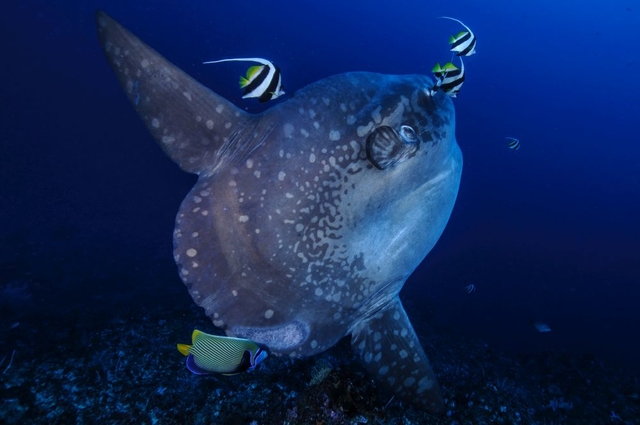
With her, by the way, there's a funny story. Friends and acquaintances playfully tease me - "For 13 years, thousands of dives and students, and you still haven't met her, the fish of your dreams - the mola-mola." Some meet her on their very first dive, at seven meters, but it hasn't happened to me yet, perhaps for the best. Every season, once a year, I wait for the water to become cold, seriously prepare, dive into spots where she is often seen, but no luck. The planned series of dives above amounts to about 20 dives around the target spots to see her. And it's just a lot of fun - new experiences, new discoveries, the joy of doing what I love the most. And the cherished goal remains a reference point for the next year.
With the mola-mola, it's clear, but do you have a top marine creature that you love encountering underwater?
I'm always thrilled to meet an octopus, they are rare creatures. I also really like mantis shrimp, it's great to see a manta ray, they are huge, and when it swims above you, it's as if night falls, as it blocks the light, an incredible feeling.
A cool encounter recently was in a cave where a pufferfish started attacking us. Absurd, considering it usually always smiles and waves its little fins at you. But here, it didn't like the lights, cameras, and it started showing aggression. All cave-like, pale as death, with a big head, a body about a meter long. It couldn't harm us, of course, but it's always interesting to observe unusual behavior in fish.
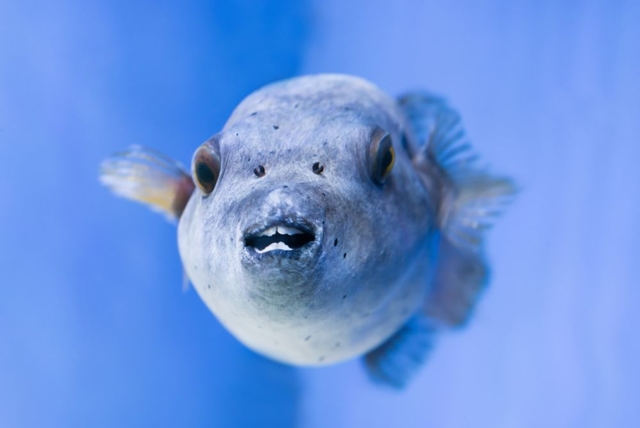
You mentioned caves, are there many of them in these waters?
No, there are quite a few, and not many people know about them. Naturally, tourist groups are not taken there; it's a place for people with the appropriate training and certifications, as it can be dangerous.
Would you recommend any quality dive centers for beginners? My friends recently went diving, and from their stories, I understood that the learning process can vary in different dive centers.
We work with a team on Nusa Penida called Pure, in Amed - Dream Divers, in Candidasa, old friends at Bali Club, and, of course, I can recommend my own company too, MyBaliTrip. For freediving enthusiasts, there's NusaFree on Nusa Penida.
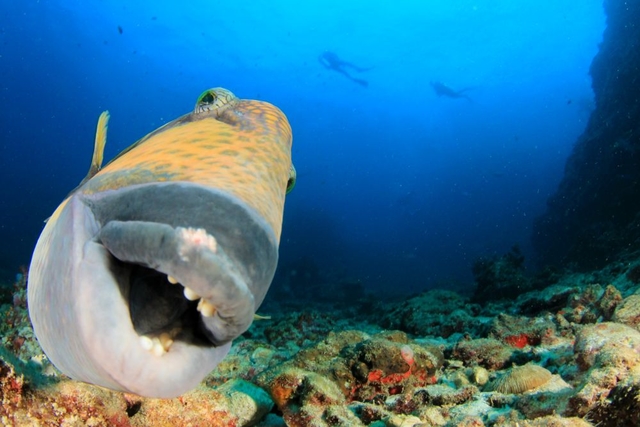
Diving is one of those things in life that is truly worth trying; it's unlikely to leave you indifferent. Of course, for this, it's worth choosing a reputable dive center with experienced instructors, preferably, to avoid language barriers and thoroughly prepare for the journey into the underwater world.
You can add one right now!